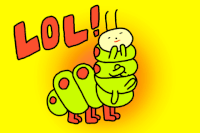
Caterpillars crawling around the letter C.
By: Mary Baker Jones
Rationale: This lesson will help children identify /c/, the phoneme represented by C. Students will learn to recognize /c/ in spoken words by learning a meaningful representation (caterpillars crawling) and the letter symbol C, practice finding /c/ in words, and apply phoneme awareness with /c/ in phonetic cue reading by distinguishing rhyming words from beginning letters.
Materials: Primary paper and pencil; chart with “Clean clams crammed in clean cans”; drawing paper and crayons; Clara Caterpillar (HarperCollins, 2001); word cards with CAR, FAT, CORE, CALL, CAST, and CLACK; assessment worksheet identifying pictures with /c/ (http://www.kidzone.ws/images-changed/kindergarten/c-as-begins2.gif)
Procedures:
-
Say: Our language is tricky to figure out. Our mouth moves in different ways as we say certain letters or words. Today we’re going to work on spotting the mouth move /c/. We spell /c/ with the letter C. C looks like curled up caterpillar, and /c/ sounds like caterpillars crunching (cuh,cuh,cuh).
-
Lets pretend to be caterpillars munching /c/,/c/,/c/. (cuh,cuh,cuh). Notice where your teeth are? (mouth is open and teeth are not touching). When we say /c/, we blow air out with our mouths open and teeth not touching.
-
Let me show you how to find /c/ in the word cart. I’m going to stretch cart out in super slow motion and listen for the caterpillar munching. Ccc-a-a-rt. Slower: Cccc-a-a-a-rrr-t. Did you hear it? There it was when I felt my mouth open and teeth apart, then I blew out. I can feel/hear the caterpillar munching /c/ in cart.
-
Now, its time for a tongue twister [on chart]. “Clean clams crammed in clean cans.” Lets say it three times together. Now say it again, but this time stretch the /c/ at the beginning of the words. “Ccclean ccclams ccccramed in ccclean cccans.” One more time, this time break the /c/ off the word: “/c/lean /c/lams /c/rammed in /c/lean /c/lams.”
-
[Take out primary paper and pencil.] When spelling the letter C we use /c/. Capital C looks like a curled up caterpillar. Lets write the letter C. Start at the top and go around to the left to make a half circle. Now that you have done it correctly, make nine more C’s.
-
Lets see if you can tell me which words you hear /c/ in. Do you hear /c/ in car or tar? Crate or take? Clean or mess? Care or land? Say: Let’s see if you can spot the mouth move /c/ in some words. Munch like the caterpillar in you hear /c/: The, cat, crazy, far, cramp, pink, clean.
-
Say: “Lets read the book Clara Caterpillar and hear about a how she competes with a catty, conceited caterpillar named Catisha.” After reading the book see if the student can come up with some more characteristics and names for more /c/ caterpillars. Then, have the student write these characteristics and names along with a picture of the caterpillars.
-
Show CAR and model how to decide if it is car or far: The C tells me to crunch like a caterpillar, /c/, so this word is cccc-ar. You try some: FAT: fat or cat? CORE: core or more? CALL: call or fall? CAST: cast or fast? CLACK: clack or black?
-
For assessment, I will distribute the worksheet. Tell students to complete the partial spellings and color the pictures that begin with C. Then, as students to read phonetic cue words from step #8.
Reference: Murray, Brush Your Teeth with F.
Book: Edwards, P. D., & Cole, H. (2012). Clara Caterpillar. New York: HarperCollins.
Assessment Worksheet: http://www.kidzone.ws/images-changed/kindergarten/c-as-begins2.gif
Click here to return to applications
Contact me: Mzj0027@auburn.edu